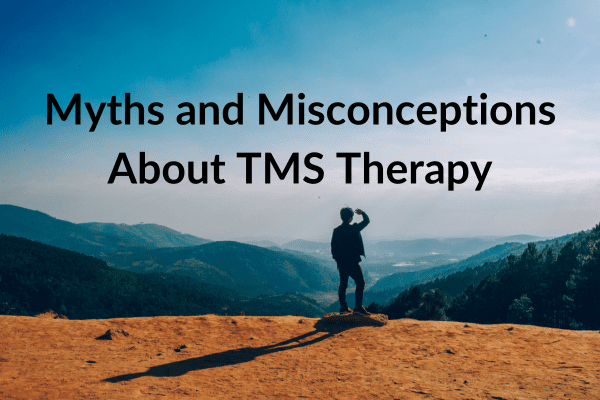Misconceptions surrounding transcranial magnetic stimulation (TMS) have unfortunately dissuaded patients from considering it as a potential treatment option. It’s important to address these misconceptions in order to provide accurate information and help individuals make informed decisions. While there are those who consider it experimental, the use of this treatment has been studied extensively and shows promising results. Transcranial Magnetic Stimulation (TMS) therapy has been a reliable treatment option for more than two decades. It has proven to be effective in various clinical applications and continues to evolve as a trusted method for addressing mental health conditions.
Myth: TMS isn’t Safe
The FDA granted approval for the use of TMS in 2008 as a treatment for major depressive disorder. Over time, the FDA has broadened its approval to encompass additional conditions beyond just depression.
Unlike many other treatments, TMS does not negatively impact the patient’s quality of life. TMS therapy is a highly non-invasive treatment option that can be conveniently performed in an outpatient setting. In studies, the only short-term side effect reported has been some discomfort on the scalp at the site of placement of the electromagnetic coil. Some individuals have reported experiencing minor side effects such as fatigue or headaches when starting the treatment, but these symptoms typically go away within one to two days. As of now, no long-term negative side effects have been reported.
Myth: TMS is Electroconvulsive Shock Therapy Under a Different Name
It’s important to clarify a common misconception regarding electroconvulsive shock therapy (ECT) and transcranial magnetic stimulation. While both involve brain stimulation, ECT and TMS are distinct treatments that should not be confused with one another. Although both are used as treatment options for depression, their similarities are limited beyond that. Electroconvulsive therapy is a medical procedure that involves the delivery of electrical currents to different areas of the brain, effectively disrupting nerve cell signals and inducing seizures. This treatment necessitates the use of anesthesia for patients, and it requires a recovery period for both the brain and body to recuperate.
Transcranial Magnetic Stimulation is a medical technique that utilizes magnetic fields instead of electricity to stimulate the neurons in the brain. This innovative approach allows for effective treatment without the need for electrical currents. The procedure involves placing an electromagnetic coil on the scalp. This coil emits magnetic pulses that are directed toward focused brain regions. By utilizing pulses, it’s possible to enhance and revitalize the signaling capabilities of the brain, leading to improved regulation of both behavior and mood. After the treatment, patients are typically able to resume their normal daily activities without any major disruptions.
Myth: The Effects of TMS Don’t Last Very Long
According to a study conducted by Cress in 2015, it was found that more than 70% of the patients experienced remission from their depression during the acute phase of treatment. Interestingly, even after a follow-up 4 years after their last TMS treatment, many of these patients were still considered to be in remission.
Previous research has utilized quantitative electroencephalograms (qEEG) and positron emission tomography (PET) scans to examine the impact of TMS treatment on patients’ brain activity. These techniques have been employed both before and after the treatment to track the physical changes that occur within the brain as a result of TMS therapy. The scans demonstrate the positive effects of targeted brain stimulation on physical changes and improved brain signaling, ultimately resulting in a reduction of symptoms.
Myth: Treatment Time is Lengthy
The initial appointment for TMS may take an hour or more, however subsequent treatments are relatively quick, usually lasting around half an hour or less. This makes it a time-efficient choice for those seeking this type of therapy. Contrary to common belief, TMS treatment can actually be quite convenient for patients, with some even fitting it into their lunch breaks.
Myth: Insurance Companies Don’t Recognize TMS as a Valid Treatment
Most major insurance companies commonly offer coverage for Transcranial Magnetic Stimulation treatment. The idea that TMS treatment may be considered unnecessary by insurance companies is based on their classification system. In general, TMS is a treatment option for psychiatric and neurologic conditions that have not responded well to traditional medications. It is typically considered an eligible expense in terms of insurance coverage. However, it’s always recommended to carefully review your insurance benefits and policy details to ensure TMS treatment is covered by your specific insurance provider. The important thing to note is that TMS is generally covered by health insurance. However, it’s essential to keep in mind that the cost of treatment may differ based on the specifics of your individual health plan.


